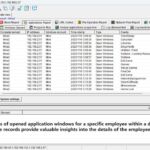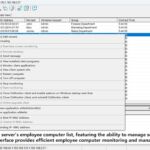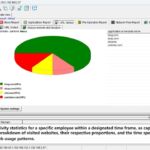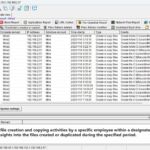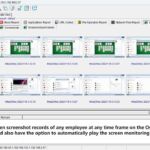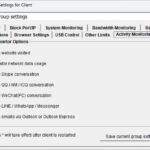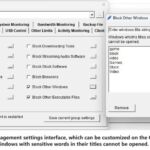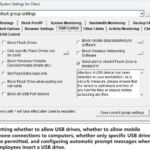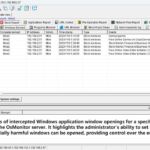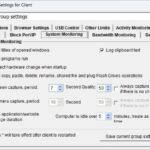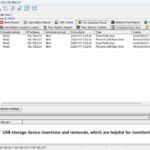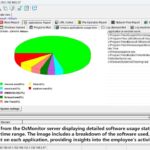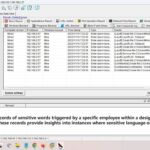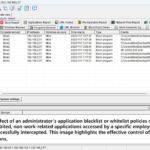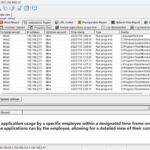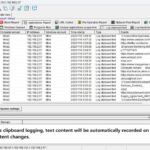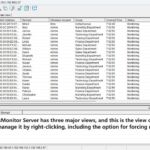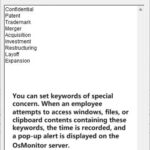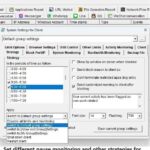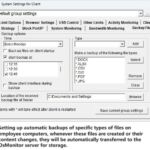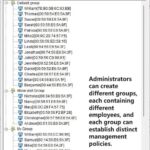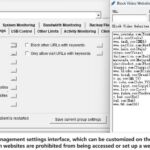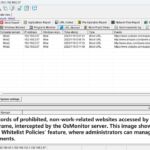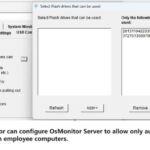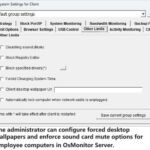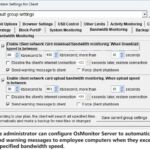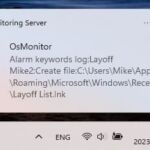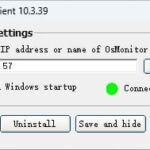In local area network management software, the PID control algorithm may not be the mainstream algorithm, but it still has certain advantages and applicability in certain specific scenarios. However, it is just one of the many algorithms used in overall network management. Therefore, if you want to use the PID control algorithm, it is essential to carefully consider the actual situation and requirements to ensure its rational effectiveness.
The following are the advantages of the PID control algorithm in local area network management software:
- Real-time Feedback Control: The PID control algorithm is a real-time feedback control algorithm suitable for control tasks that require continuous monitoring and adjustment. In a local area network, certain network devices or sensors may require real-time monitoring and adjustment to maintain network stability and performance. For example, during high loads, switches need to dynamically adjust data packet forwarding rates, and the PID control algorithm can respond quickly and gradually adjust parameters to keep the network running steadily.
- Simple yet Effective: The PID control algorithm is relatively simple and easy to implement and adjust. For some straightforward control requirements, the PID control algorithm can be an economically effective choice. In local area network management software, there may be some small networks or relatively simple scenarios where using the PID control algorithm can quickly set up a control system without the need for overly complex algorithm design and parameter adjustments.
- Strong Adaptability: The PID control algorithm can dynamically adjust parameters based on the actual situation, making it adaptable to different control objects and environmental changes. This can be advantageous in complex network environments. For instance, the number of devices and traffic loads in the local area network may change at any time, and the PID control algorithm can adjust the control strategy in real-time according to the current network state to ensure optimal network performance.
Application scenarios of the PID control algorithm in local area network management software include, but are not limited to, the following aspects:
- Automatic Adjustment of Network Devices: In a local area network, certain network devices (such as switches, routers, etc.) may need to be automatically adjusted based on network traffic and load conditions to ensure network stability and throughput. The PID control algorithm can be used in such scenarios for automatic adjustment of device parameters, such as bandwidth limits and buffer sizes. When the network load is heavy, the PID control algorithm can automatically increase the bandwidth limit to prevent device overload. At the same time, it can timely release bandwidth when the network is idle to improve resource utilization.
- Network Sensor Control: In a local area network, some sensors may be used to monitor the network's physical parameters, such as temperature, humidity, etc. The PID control algorithm can be used to real-time adjust the outputs of these sensors to keep the target parameters within the desired range. For example, if the temperature in the local area network is too high, the PID control algorithm can adjust the temperature setting of the air conditioning system to keep the temperature within a suitable range and ensure the normal operation of network devices.
- Traffic Control: In a local area network, traffic control challenges may be encountered, especially in congestion management. The PID control algorithm can be applied to traffic control to alleviate network congestion and ensure smooth and efficient data transmission. When the traffic in the local area network keeps increasing, the PID control algorithm can dynamically adjust the data packet transmission rate to avoid network congestion and packet loss, thereby providing a better user experience.
It is essential to emphasize that the PID control algorithm is not the primary option in local area network management software. Most of the time, other types of algorithms are used to handle tasks such as network device configuration, monitoring, troubleshooting, and resource management. For example, for network device configuration, static settings may be used instead of real-time control algorithms.
About OsMonitor:
The mission of OsMonitor is to create a Windows computer system tailored for work purposes, effectively regulating employee computer behavior. It enables employers to understand what employees are doing each day, monitoring every action, including screen activity and internet usage. Additionally, it restricts employees from engaging in specific activities such as online shopping, gaming, and the use of USB drives.
OsMonitor, designed purely as software, is remarkably user-friendly and requires no additional hardware modifications. A single management machine can oversee all employee computers. As a leading brand in employee computer monitoring software with over a decade of successful operation, OsMonitor has rapidly captured the global market with its minimal file size and excellent cost-effectiveness compared to similar software. At this moment, thousands of business computers worldwide are running OsMonitor daily.




